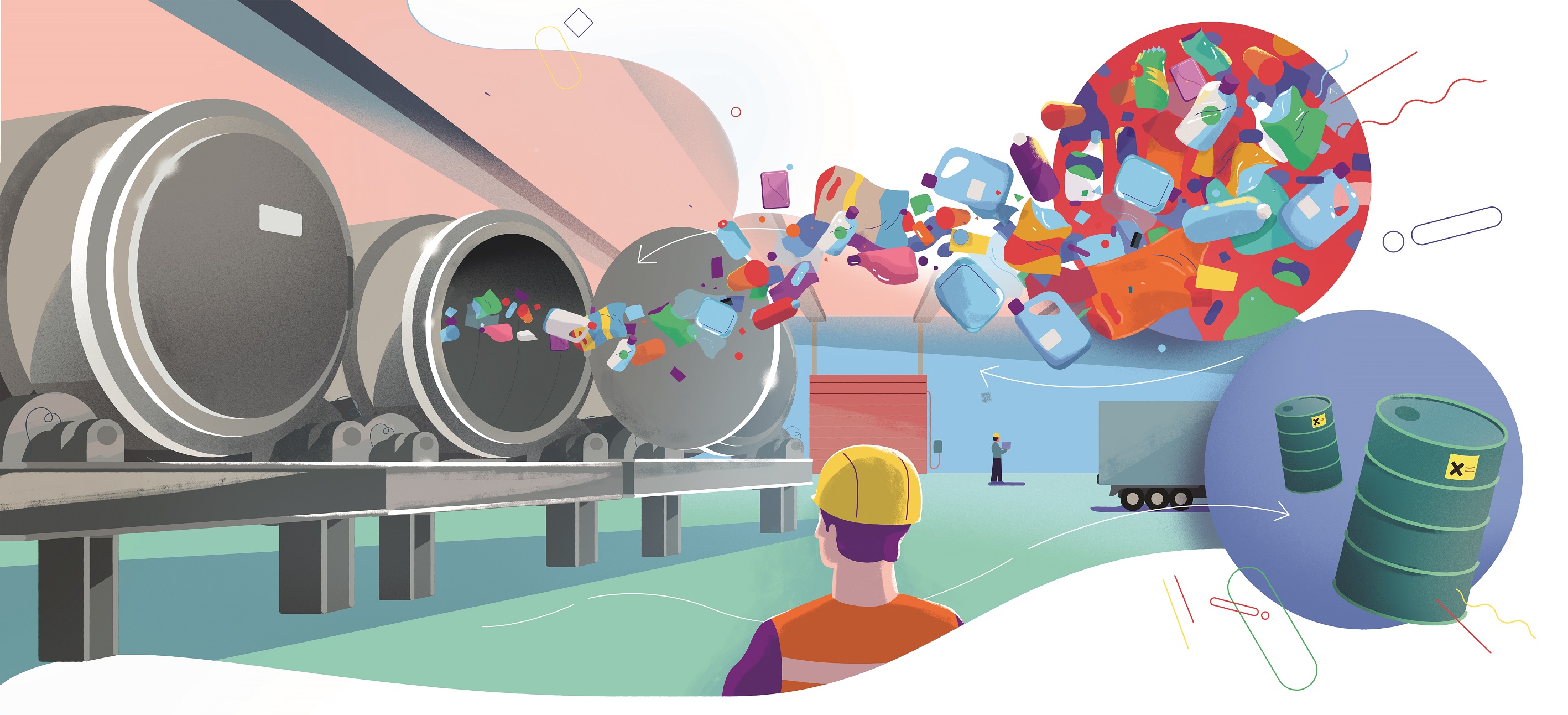Do you ever wonder how much (or how little) of the plastic waste (packaging, containers, and milk cartons) you put in your recycling bin is actually recycled? The garbage truck transports it to a waste management facility for sorting and recycling. The ‘good’ plastic is recycled and the rest—which is either too dirty, mixed, or damaged for recycling—is incinerated.
In Denmark alone, around 370,000 tonnes of plastic waste is incinerated every year. According to the Danish Ministry of the Environment, plastic waste incineration makes up a significant portion of Denmark’s fossil-fuel carbon emissions. In other words, there is a huge green potential in developing new methods for recycling even more plastic waste than we do now.
If we can also reduce the amount of non-renewable plastic waste, we can reduce the need for the non-renewable raw materials needed for plastic production—oil and natural gas.
A group of DTU researchers have therefore investigated new possibilities for recycling our plastic waste in collaboration with Roskilde University and a number of industry partners. Their research project RePlastic has shown that a valuable oil can be produced from otherwise useless plastic waste through pyrolysis.
Learn more about the reasons behind Anders Egede Daugaard's enthusiasm for the potential of pyrolysis technology in the recycling of our plastic waste on the DTU website here.
